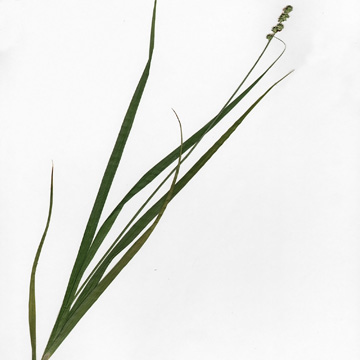

Carex sparganioides - (image 1 of 2)
Taxonomy
Family: Cyperaceae
Section Phaestoglochin
Habitat
Dry to mesic woods and thickets, on neutral or calcareous soils.
Associates
Distribution
ME and Quebec to VA, west to MN, SD, and OK.
Morphology
Tufted perennial, without conspicuous rhizomes; stems 40-80 cm, usually rough above, equaling or surpassing the leaves; main leaves 4-10 mm wide; proximal sheaths loose, ventrally pale and often thin, dorsally septate-nodulose and white with green veins or mottled, ventrally hyaline and transversely rugose; spikes androgynous, subglobose or ovoid; lower spikes well separated, sometimes by as much as 2-3 cm, the inflorescence elongate, 4-10 cm; scales ovate, with broad hyaline margins, acuminate and usually cuspidate as well, about equaling the body of the perigynium; perigynia planoconvex, green ovate or lance-ovate, 3-4.5 mm, 1/3 to 2/3 as wide, acuminate into a rough-margined beak 1/3 to 1/2 as long as the body; achene lenticular, broadly ovate, the style-base slightly thicked.
Notes
Fruiting June to July
Wetland indicator: FACU
Carex aggregata and C. cephaloidea are similar but have the spikes all aggregated into a more compact inflorescence 2-4 cm long.
References
Ball, P.W. and A.A. Reznicek. 2002. Carex, In: Flora of North America Editorial Committee, Eds. Flora of North America North of Mexico. Volume 23. Oxford University Press, New York.
Gleason, Henry A. and A. Cronquist. 1991. Manual of Vascular Plants of
Northeastern United States and Adjacent Canada. Second Ed.
The New York Botanical Garden. Bronx, NY
|
© Michael Hough 2018 |